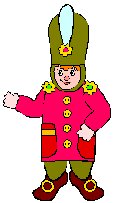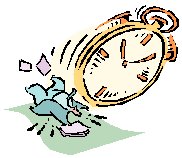Games That Parents Can Play With Kids To Develop Motor Skills
THE learning outcomes of the following games are
important for motor development and help in the fine-tuning of eye/hand
co-ordination. It also contributes to finger strength. Parents can read the
following rhymes to toddlers and young children while the children respond
with finger movements.
My Fingers
 This
is my thumb (child holds it up) This
is my thumb (child holds it up)
This is my forefinger (child holds it up)
This is my middle finger (child holds it up)
This is my ring finger (child holds it up)
This is my little finger (child holds it up)
Five Little Fingers
This game teaches good traffic behaviour in addition to
developing motor co-ordination.
Five little fingers and a street to be crossed,
One didnít look and he was tossed.
Four little fingers walked straight across,
One didnít look right again and he landed in the moss.
Three little fingers kept looking both ways,
One did not and it was his last day.
Two little fingers walked across fast,
One of them ran, and it was his last day.
 One
little finger crossed at the traffic light, One
little finger crossed at the traffic light,
He looked right-left-right,
And he was okay.
Finger Rhyme
Open them, shut them,
Open them, shut them.
Give a little clap.
Open them, shut them,
Open them, shut them,
Lay them in your lap.
(Use hand gestures)
 Ten
Little Soldiers Ten
Little Soldiers
Ten little soldiers stand up straight,
(hold both hands up, fingers straight)
Ten little soldiers make a gate,
(intertwine fingertips)
Ten little soldiers make a ring,
(form a circle with fingers)
(bend all the fingers)
(wiggle all fingers)
(hide hands behind your back)
The following activities assist the development of small
muscles for better eye movement and to improve side vision Ė an important
aid to road safety. If children are unable to focus on objects outside their
immediate area of vision (tunnel vision), this could be problematic. They
will be unable to see vehicles outside their immediate area of sight.
Pendulum
Fasten an object such as a piece of chalk, sponge or ball
to the end of a long piece of string. Allow the object to swing slowly in
front of a class or group. Children should follow the movement of the object
with their eyes without moving their heads.
The Tick-Tock Clock
The child sits on the floor and listens to the following
rhyme while doing the appropriate movement. They should move their eyes only
while keeping their head still. The parent demonstrates the movements by
flashing a torch on the ceiling.
 Tick Tick
(move the torch from far left to far right)
Tock
(and back again)
Somethingís hiding in the clock
(rhythmic left-right movements)
A thing that makes a ticking sound,
And help the hands go round and round
(circular movements with torch)
A thing that canít be very tall
To fit inside a place that small,
Tick
(move the torch from far left to far right)
(and back again)
Somethingís hiding in the clock
(rhythmic left-right movements)
The following help in the development of eye and foot
coordination. This is important as lack of agility and sure-footedness may
cause the child to stumble and fall in front of oncoming vehicles.
Rope Walk

The rope-walk teaches balance and eye/ foot
co-ordination.
Place a rope on the floor, or draw a large shape on the
ground using chalk. Walk forward, heel-to-toe, on the rope or shape. Walk
forward on tip-toe on the rope or shape. Walk forward with giant steps on
the rope or shape. Walk sideways on the rope or shape. Walk backwards on the
rope or shape. Walk a cross-over step, without stepping on the rope.
Alternate with the left foot to the right side of the rope and then with
right foot to the left side of the rope.
Place a rope in a looped pattern on the ground. Let your
child step in the loops, without touching the rope.
Snake
 Gently
wriggle a rope back and forth on the floor or ground. Ask your child to jump
over it without touching the "snake". Gently
wriggle a rope back and forth on the floor or ground. Ask your child to jump
over it without touching the "snake".
Kicking Game
Draw a circle or several circles on the ground and let
your child stand about five metres away. If you are using more than one
circle you can number the circles. If the child kicks a beanbag or paper
ball into a circle he or she scores that number.
Clever Toes
 Children
sit on a chair and remove their shoes and socks. They place their socks in
front of their feet. Without moving their heels from the floor, they extend
the toes to grasp the sock. This is done one foot at a time. Keep on until
the socks are completely under their feet. Children
sit on a chair and remove their shoes and socks. They place their socks in
front of their feet. Without moving their heels from the floor, they extend
the toes to grasp the sock. This is done one foot at a time. Keep on until
the socks are completely under their feet.
Place small objects such as pencils, pegs or pebbles on
the floor. Children are then told to pick up the objects with their toes and
place them in a box.

 back back
|
 This
is my thumb (child holds it up)
This
is my thumb (child holds it up) One
little finger crossed at the traffic light,
One
little finger crossed at the traffic light, Ten
Little Soldiers
Ten
Little Soldiers Tick
Tick
 Gently
wriggle a rope back and forth on the floor or ground. Ask your child to jump
over it without touching the "snake".
Gently
wriggle a rope back and forth on the floor or ground. Ask your child to jump
over it without touching the "snake". Children
sit on a chair and remove their shoes and socks. They place their socks in
front of their feet. Without moving their heels from the floor, they extend
the toes to grasp the sock. This is done one foot at a time. Keep on until
the socks are completely under their feet.
Children
sit on a chair and remove their shoes and socks. They place their socks in
front of their feet. Without moving their heels from the floor, they extend
the toes to grasp the sock. This is done one foot at a time. Keep on until
the socks are completely under their feet.
